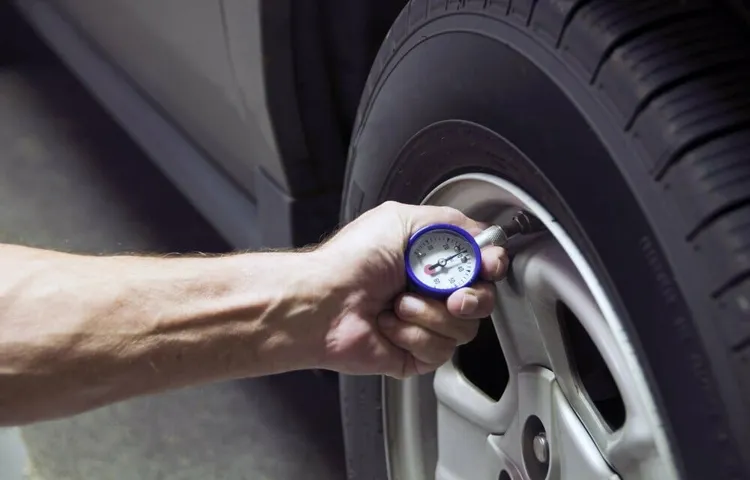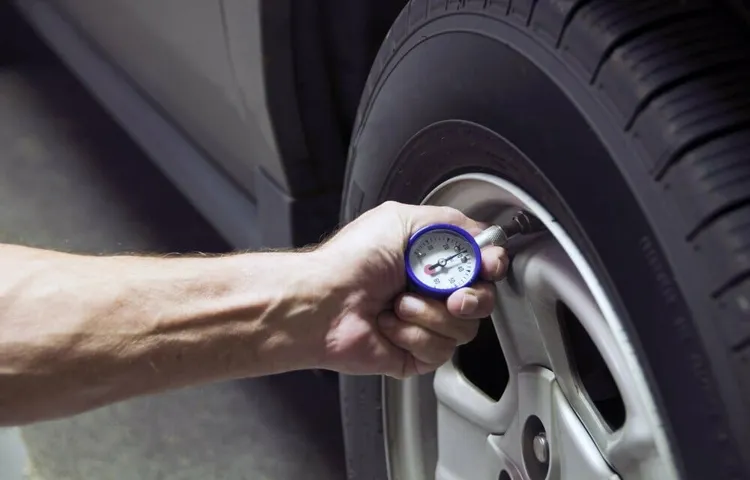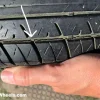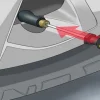Has your car ever suffered a flat tire while on the road? It’s undoubtedly an unpleasant experience that can ruin your day and make you feel helpless. However, if you’re fortunate enough to have a spare tire, you could be back on the road in no time. But one question remains, what PSI should a spare tire be? This is an essential question that every car owner should know the answer to.
The PSI of your tire impacts everything from its performance to fuel efficiency, and a spare tire is no exception. In this article, we’ll help you understand the right PSI range that your spare tire should have and why it’s so critical. Whether you own a new or used car, your spare tire could be the difference between getting stranded on the road or reaching your destination safely.
So let’s explore what PSI your spare tire should have to get the most out of it in the event of a flat tire.
Table of Contents
Understanding PSI
As a car owner, it’s crucial to know what psi your spare tire should be. Most spare tires come with a recommended pressure of around 60 psi, but it’s always best to check your vehicle owner’s manual or the tire placard sticker located inside your car door to ensure you are following the manufacturer’s guidelines. It’s important to maintain the correct tire pressure as underinflated or overinflated tires can lead to potential safety hazards and reduce the lifespan of your tires.
A flat tire can happen at any time, so it’s always a good idea to have a properly inflated spare tire ready in case of an emergency. So, don’t forget to check and maintain the proper psi for your spare tire to ensure your safety on the road.
What is PSI?
PSI, or pounds per square inch, is a unit of measurement commonly used in various fields ranging from engineering to medicine. It is a measure of pressure, which is the force exerted on a surface per unit area. This means that the higher the PSI, the greater the pressure, and vice versa.
For instance, a car tire typically requires a PSI of 32-35, while a basketball would require a PSI of 7- Understanding PSI is crucial when dealing with various equipment that requires pressure regulation. It is important to note that PSI is not to be confused with other units of measurement such as pascal or bar.
While they are all measures of pressure, they differ in the amount of force and area used for measurement. Thus, it is essential to use the correct unit of measurement when calculating pressure in order to ensure accuracy and precision in various fields of application.

Importance of maintaining proper PSI
Understanding PSI is crucial when it comes to maintaining proper tire pressure and extending the life of your tires. PSI stands for “pounds per square inch” which refers to the amount of air pressure in your tires. Maintaining the correct PSI affects not only tire wear, but also fuel economy, handling, and overall safety.
Driving with underinflated tires can cause the tire to wear unevenly, reducing its tread life and increasing the risk of a blowout. Overinflated tires, on the other hand, can also cause uneven wear, negatively impact fuel efficiency, and provide a harsh and uncomfortable ride. It is important to follow the manufacturer’s recommended PSI level, which is usually found on the tire information placard in the driver’s door jamb or in the owner’s manual.
Maintaining the proper PSI will ensure that your vehicle handles properly and offers maximum safety and efficiency.
Determining the Required PSI for Spare Tires
It’s essential to know the required PSI for your spare tire before you hit the road. The recommended PSI for a spare tire is typically printed on the side of the tire. However, if it is missing, you need to refer to the vehicle owner’s manual.
The manual usually provides information on the spare tire’s size, load capacity, and recommended PSI. Some vehicles utilize a full-size spare tire with the same PSI rating as the other tires. In contrast, others use a smaller temporary spare tire with a higher PSI rating.
It’s important to ensure that your spare tire has the correct inflation level because an underinflated or overinflated spare tire can be hazardous. Therefore, make sure to check your spare tire’s recommended PSI and monitor its inflation level regularly to ensure optimal performance.
Check the owner’s manual
When it comes to determining the required PSI for your spare tire, one of the best places to start is by checking the owner’s manual. Different vehicles may require different tire pressure, and the owner’s manual will provide exact specifications for your spare tire. It’s important to check the PSI regularly, as underinflated tires can cause poor handling, decreased gas mileage, and even a blown tire.
Some drivers may assume that the PSI for their spare tire is the same as their regular tires, but this is not always the case. By referring to the owner’s manual, you can be sure that your spare tire is properly inflated and ready to go in case of an emergency. So next time you’re wondering about the required PSI for your spare tire, make sure to grab the owner’s manual and double-check the specifications.
Look for the PSI label on the tire
PSI label, required PSI, spare tires It’s important to understand the required PSI for your spare tire, as it can be different from your regular tires. The easiest way to determine this is by looking for the PSI label on the tire itself. This label will provide the recommended air pressure for the tire.
It’s important to follow this recommendation to ensure proper function and safety of the spare tire. In some cases, the PSI label may not be present on the spare tire, so it’s best to refer to the vehicle owner’s manual for the correct pressure. Additionally, it’s important to remember that overinflating or underinflating the spare tire can lead to decreased performance and potentially hazardous driving conditions.
So always be sure to check and maintain the correct PSI for your spare tire.
Inflation Procedure for Spare Tires
If you ever find yourself in a situation where you need to use your spare tire, it is essential to know the correct inflation procedure. The recommended psi for a spare tire can vary depending on the make and model of your vehicle. However, most manufacturers suggest that spare tires should have a psi of around 60.
It’s important to note that maintaining the correct tire pressure is crucial for safe and efficient driving. If a spare tire is underinflated, it may not provide the necessary support to your vehicle and can cause damage to the wheel well. On the other hand, an overinflated tire can also be harmful as it may cause the tire to burst, leading to potential accidents.
To check the pressure of the spare tire, you can use a handheld tire pressure gauge. Remember to inspect the spare tire regularly and replace it if necessary. Overall, ensuring that your spare tire perfectly inflated before hitting the road is one of the small but significant steps in ensuring a safe and successful journey.
Use a tire pressure gauge to check current PSI
When it comes to your vehicle’s spare tire, it’s important to make sure it’s properly inflated and ready to use in case of an emergency. The first step in the inflation procedure is to use a tire pressure gauge to check the current PSI of the spare tire. This is crucial because an underinflated tire can lead to poor handling and potential blowouts on the road.
Once you’ve determined the current PSI of the spare tire, inflate it to the recommended pressure level listed in your vehicle’s owner’s manual. It’s important not to overinflate the tire, as this can also cause handling issues and potential damage to the wheel. Remember, a spare tire should only be used temporarily until you can get the damaged tire repaired or replaced.
By checking and properly inflating your spare tire, you can ensure your safety on the road in case of an unexpected tire emergency.
Inflate spare tire to recommended PSI
When it comes to inflation procedures for spare tires, it’s important to know the recommended PSI for your specific vehicle. The recommended PSI can usually be found in the owner’s manual or on a sticker located on the driver’s side doorjamb. Once you have this information, you can proceed with inflating your spare tire.
First, remove the spare tire from its storage location and make sure it’s lying on a flat and stable surface. Then, using a tire pressure gauge, check the current PSI of the spare tire. If it’s lower than the recommended PSI, use an air compressor or gas station air pump to fill the tire to the proper level.
Once you’ve filled it to the recommended PSI, check it again with the tire pressure gauge to ensure accuracy. It’s important to stay within the recommended PSI range as overinflating can cause the tire to burst and underinflating can affect the vehicle’s handling and stability. By following this inflation procedure, you can be confident that your spare tire is ready to go in case of an emergency on the road.
Conclusion
In conclusion, the optimal psi for a spare tire really depends on how far you want to go and how much air you’re willing to pump. Some may argue that a higher psi is better for extended driving, while others may prefer a softer ride at a lower psi. Ultimately, the important thing is that your spare tire is always ready to step up and save the day, no matter what the road throws your way.
With the right psi, you’ll be rolling smoothly to your destination and feeling like a true tire hero. Now, go forth and pump with confidence, my fellow drivers!
FAQs
1. What is the recommended PSI for a spare tire on a passenger car? A: The recommended PSI for a spare tire on a passenger car is typically between 60 to 80 PSI, depending on the vehicle manufacturer’s specifications. 2. Can I use a tire with a lower PSI rating as a spare tire? A: It is not recommended to use a tire with a lower PSI rating as a spare tire, as it may not provide the necessary support and may affect the handling of the vehicle. 3. How often should I check the PSI on my spare tire? A: It is recommended to check the PSI on your spare tire at least once a month, and before any long trips or extended use. 4. What will happen if I overinflate my spare tire? A: Overinflating your spare tire can lead to excessive wear and tear, as well as possible blowouts or handling issues. Always follow the recommended PSI for your specific vehicle. 5. Is it safe to drive on a spare tire with a different PSI rating than my other tires? A: While it is generally not recommended, it may be safe to drive on a spare tire with a slightly different PSI rating. However, it is best to consult with a professional mechanic to ensure proper tire safety and handling. 6. Can I repair a spare tire if it becomes damaged or punctured? A: Yes, a spare tire can typically be repaired if it becomes damaged or punctured, but it is recommended to consult with a professional tire repair specialist. 7. How should I store my spare tire to maintain the proper PSI? A: It is best to store your spare tire in a cool, dry place out of direct sunlight to prevent degradation. It is also recommended to check the PSI periodically, especially if the tire has not been used in some time.



